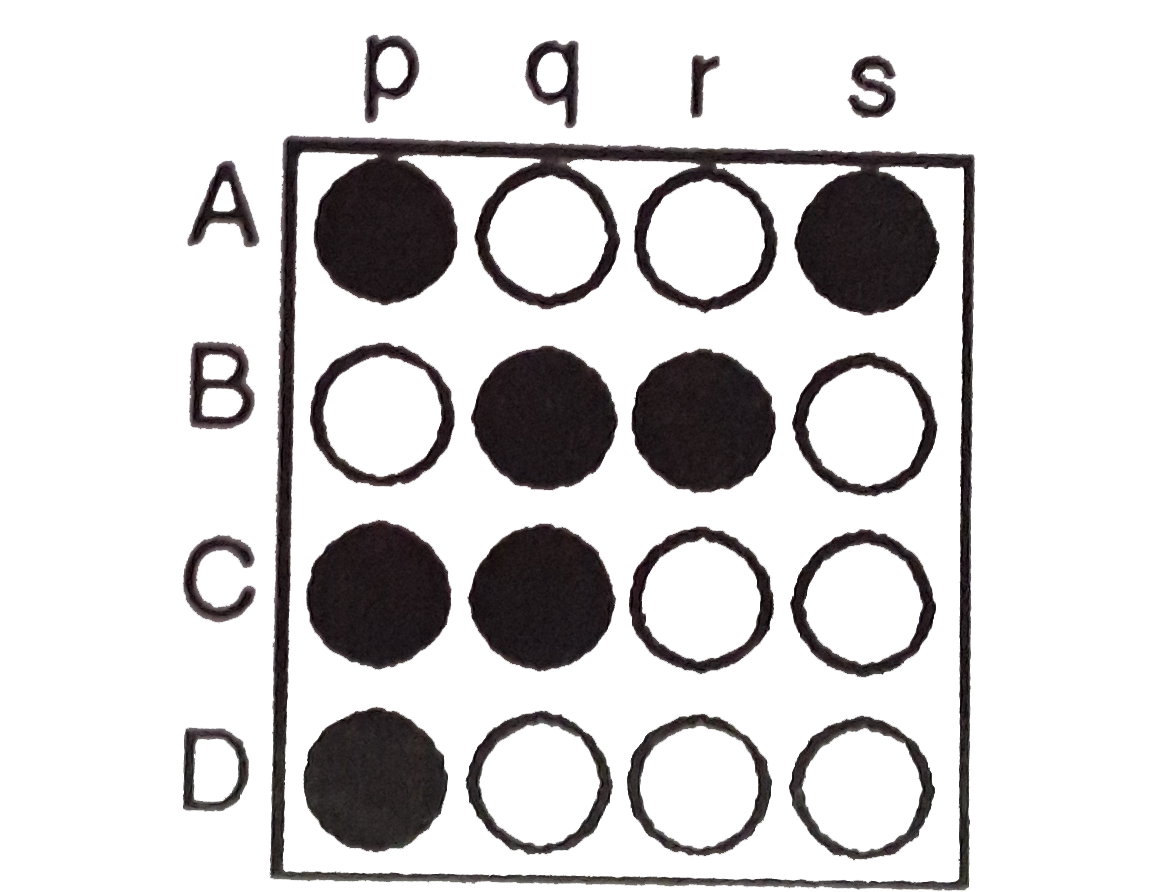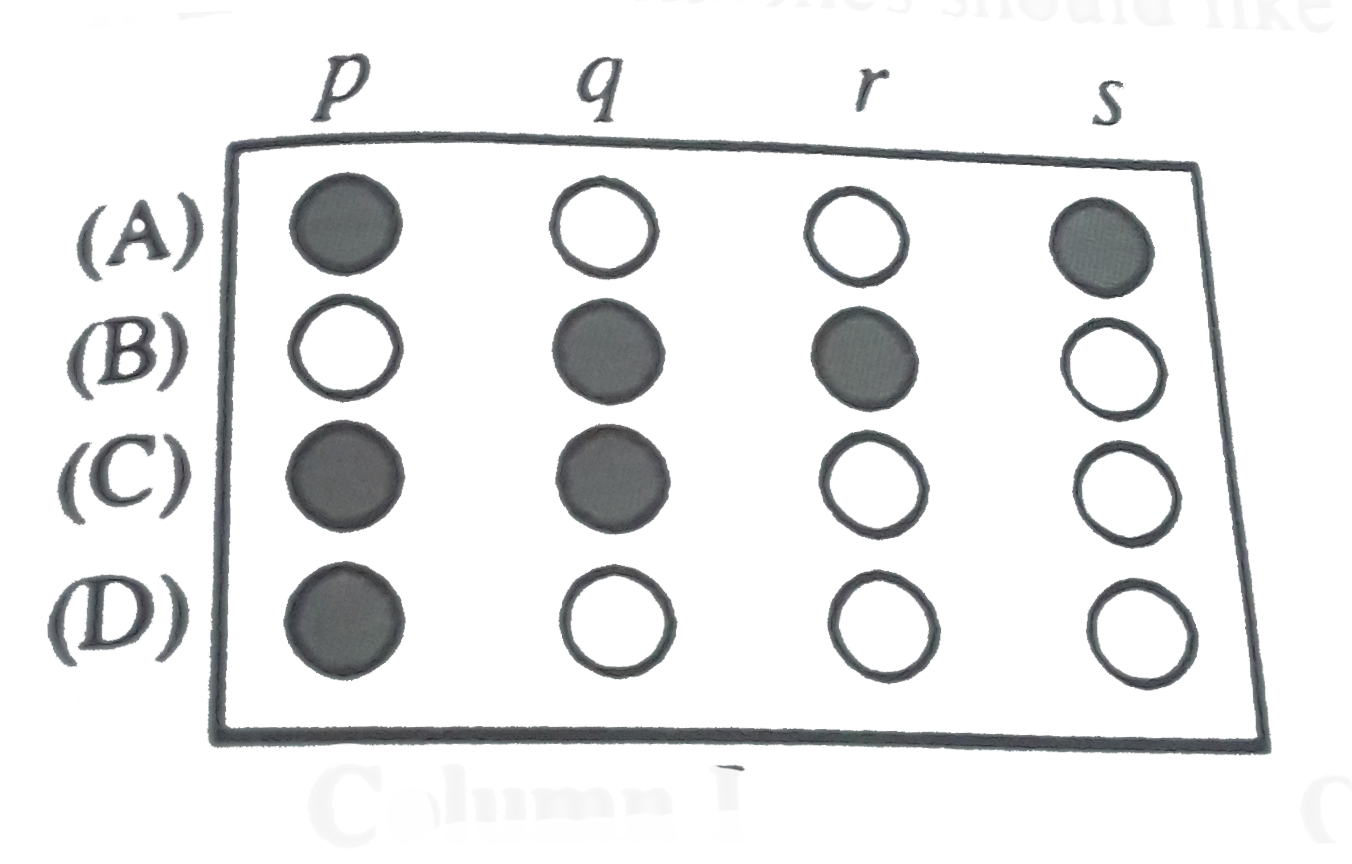Column IColumn IIA.Nascent hydrogenp.PermutitB Hard waterq.Used as tracer in the study of reaction mechanism C Hydrogen peroxider.ReducesFeCl3toFeCI2DHeavy waters.ReducesCr2O2−7 toCr3+Solution in Malayalam
A-r,s B-p C-r,s D-q
Topper's Solved these Questions
- HYDROGENBOOK - BRILLIANT PUBLICATIONCHAPTER - HYDROGENEXERCISE - LEVEL -III ( Statement Type )
6 Videos
- HYDROGENBOOK - BRILLIANT PUBLICATIONCHAPTER - HYDROGENEXERCISE - LEVEL -III ( Linked Comprehension Type)
8 Videos
- HYDROGENBOOK - BRILLIANT PUBLICATIONCHAPTER - HYDROGENEXERCISE - LEVEL -III ( Numerical Type )
10 Videos
- HYDROCARBONSBOOK - BRILLIANT PUBLICATIONCHAPTER - HYDROCARBONSEXERCISE - LEVEL-III (LINKED COMPREHENSION TYPE)
9 Videos
- ISOMERISM AND REACTION MECHANISMBOOK - BRILLIANT PUBLICATIONCHAPTER - ISOMERISM AND REACTION MECHANISMEXERCISE - LEVEL - III (Linked Comprehension Type) (Paragraph III )
3 Videos
Similar Questions
Assertion : Permanent hardness of water is removed by treatment with washing soda.
Reason : Washing soda reacts with soluble magnesium and calcium sulphate to form insoluble carbonates.
View SolutionThe volume of 10 volume H2O2, solution that decolourises 200 ml of 2NKMnO4, solution in acidic medium is:
View SolutionCommercial sample of H2O2, is labelled as 10 V. Its % strength is nearly
View Solution2-Phenyl propene on acidic hydration gives :
View SolutionWhich of the following is most basic?
View SolutionMatch the column
Column IColumn II(A) acid chloride(p) Readily halogenated at αposition (B) Acid anhydride(q) Can be reduced into alcohol by LiAlH4in ether(C) Ester(r) Can be reduced into alcohol by NaBH4in ethanol(D) Acid amide(s) Can undergo catalytic hydrogenation
View SolutionColumn(I)Column(II)(a)Presence of halogenP.HNO3/AgNO3(b)Presence of sulphurQ.Na2[Fe(CN)5NO](c)Presence of nitrogenR.Co(NO3)2(d)Presence ofPandSS.FeCl3
View SolutionColumn(I)Column(II)(a)Presence of halogenP.HNO3/AgNO3(b)Presence of sulphurQ.Na2[Fe(CN)5NO](c)Presence of nitrogenR.Co(NO3)2(d)Presence ofPandSS.FeCl3
View SolutionMatch the column -
Column-I Column-II
(a)Copper pyrites(P)ZnCO3(b)Malachite(Q)CuCO3.Cu(OH)2(c)Calamine(R)CuFeS2(d)Sphalerrite(S)ZnS
View Solution
Column IColumn IIANascent hydrogenpPermutitBHard waterqMolecularH2with excess energyCHydrogen peroxiderReducesFeCl3toFeCl2DDihydrogensReducesCr2O−7toCr3+
View SolutionMatch the items given in Column I and Column II. {:(,"Column I","Column II"),(A.,"Protective colloid",1.FeCl_(3)+NaOH),(B.,"Liquid-liquid colloid",2."Lyophilic colloids"),(C.,"Positively charged colloid",3."Emulsion"),(D.,"Negatively charged colloid",4.FeCl_(3)+"hot water"):}
View SolutionHere each question contains statements given in two column which have to be matched. Statements in columns I are labelled as A, B, C and D where as the statements in column II are labelled p, q, r and s. The answers to these questions are to be appropriately bubbled as illustrated in the following example.
If the correct matches should like the following.

Column IColumn II(A)SO2(p)Basic(B)H2SO4(q)Acidic(C)HNO3(r)Reducing(D)NH3(s)Oxidizing
View SolutionAluminium reduces Cr_(2)O_(3) to Cr, but chromium cannot reduce Al_(2)O_(3) to Al- why?
View Solution{:(" Column - I"," Column - II(Uses)"),(" a) "Na_(2)CO_(3)," P) ""Fungicide"),(" b) "CuSO_(4)*5H_(2)O," Q) ""Medicine"),(" c) "NaHCO_(3)," R) ""Preservative"),(" d) "NaCl," S) ""Textile"):}
View SolutionMatch the Column-I with Column-II :
List-I List-II(A)CuSO4P.Cationic interaction(B)Na2CO3Q.Anionic interaction(C)FeCI3R.pH>7(D)K2SO4S.pH<7T.No hydrolysis of ions
View SolutionColumn - IColumn - II(A)H3BO3(P)Hydrogen bonds(B)Na2B4O7(Q)Amphoteric(C)Al2O3(R)Basic(D)TIOH(S)Lewis acid
View Solution
